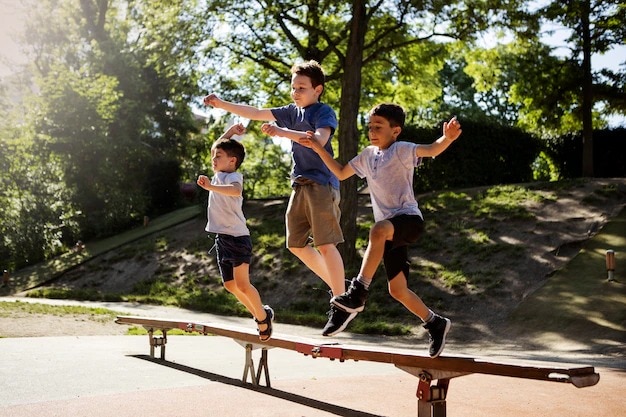Experts recommend encouraging outdoor play as it can enhance kid’s eye health and further reduce the risk of myopia.
Myopia, commonly known as nearsightedness, is a vision condition that affects a growing number of children today. This vision condition occurs when distant objects appear blurry while close ones remain clear. Myopia typically emerges in childhood, when the eyeball is too long or the cornea has excessive curvature, causing light entering the eye to focus in front of the retina instead of directly on it.
Genetics play a role and children with myopic parents are more likely to develop the condition. However, lifestyle factors like extended screen time and prolonged engagement in near-vision activities can also contribute to its development.
How Does Playing Outdoor Reduce The Risk of Myopia in Children?
- Sunlight And Eye Health: Exposure to natural sunlight is beneficial for eye health. Spending time outdoors exposes children to different light intensities and helps regulate the growth of the eye potentially reducing the risk of myopia.
- The Two-Hour Rule: The American Academy of Ophthalmology recommends the “20-20-20” rule where every 20 minutes of screen time should be followed by a 20-second break, looking at something 20 feet away. Outdoor play naturally incorporates these breaks and provides a healthy balance
- Physical Activity And Eye Health: Outdoor play involves physical activities that contribute to overall health. Exercise is linked not only to physical well-being but also to improved eye health, potentially lowering the risk of myopia.
- Engaging in Distant Views: Spending time outdoors encourages children to focus on distant objects, such as trees or sports activities, which are more than an arm’s length away.
- Importance of Supervision: While outdoor play is encouraged, it’s essential to ensure that activities are safe and supervised. Outdoor environments should be child-friendly, minimising potential risks.
–>
